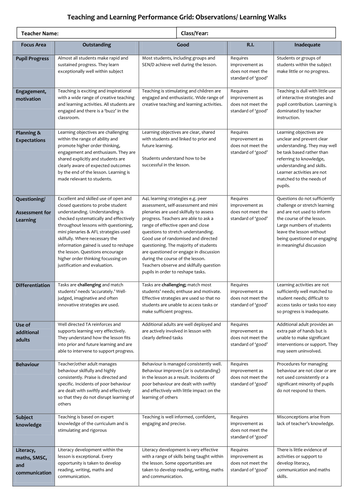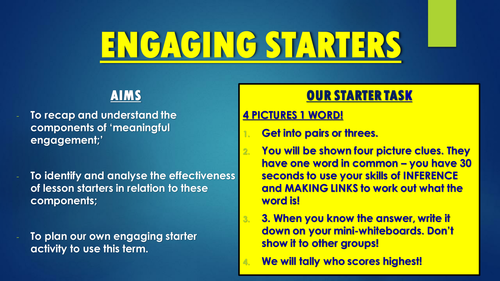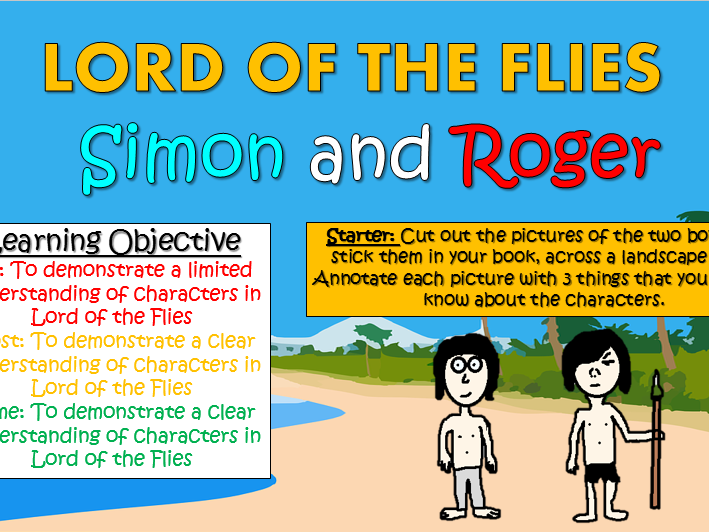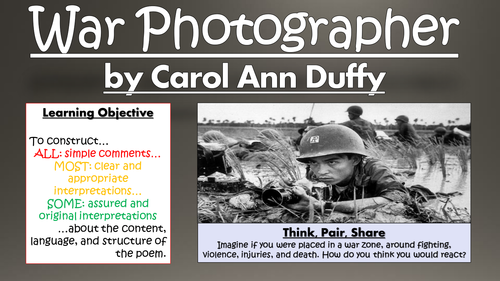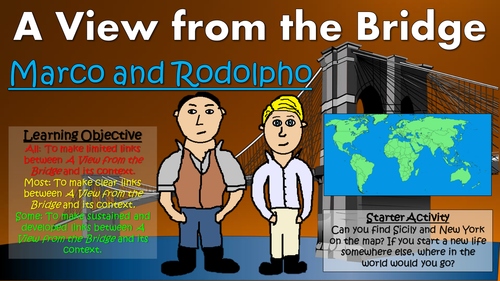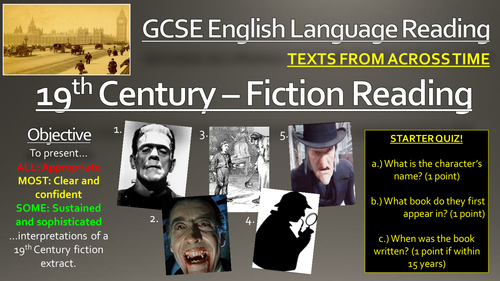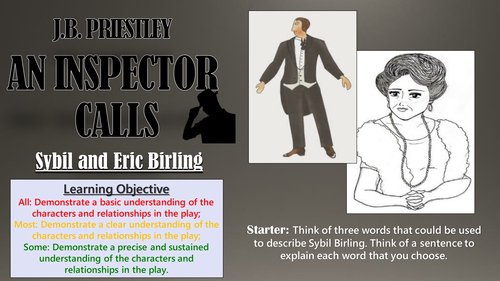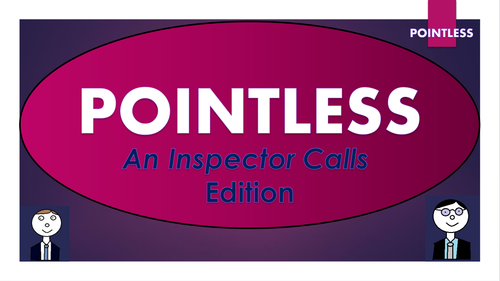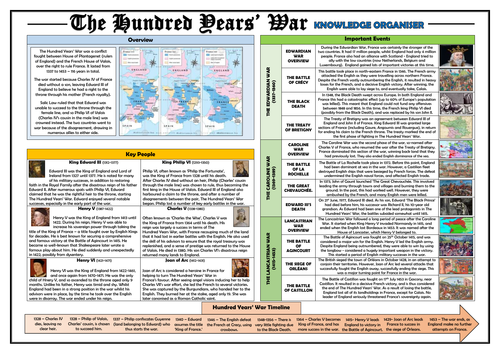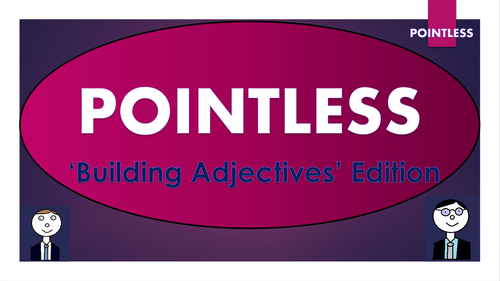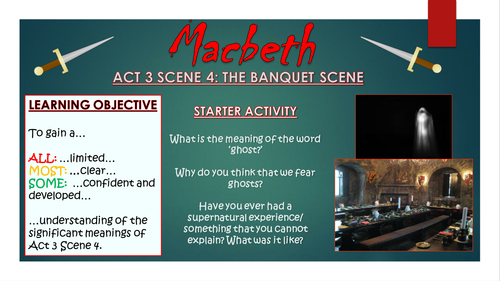
3k+Uploads
1925k+Views
2250k+Downloads
Pedagogy and professional development

Observation & Learning Walk Performance Grid
For use alongside lesson observations and learning walks, this succinct performance grid enables observers to gauge and categorise teaching and learning sessions using OFSTED guidance for effective teaching. The first page of the document provides descriptors of 'outstanding', 'good', 'requires improvement' and 'inadequate' teaching within appropriately considered focus areas, for example: Questioning, Planning, Use of Additional Adults, etc. Schools that already employ this tool often opt to highlight the descriptors on this page as they observe, thus creating a bigger picture of the strengths and areas for improvement in the teaching and learning observed. Schools who still grade individual lessons have noted that this is a helpful aid in arriving at an overall judgement. The second page allows observers to further pinpoint and describe the 'www' (what went well) and 'ebi' (even better if) aspects of the lesson, in order to make feedback to teachers more clear.

Creating Engaging Starters - CPD Session and Resources
This CPD session is designed to enable teachers and learning support to facilitate highly engaging and motivating lesson openings. The session is interactive, rooted in educational theory, and contains video/collaborative resources to encourage staff participation. Participants learn to:
- Understand the key features of meaningful engaged learning;
- Identify and analyse these features in video examples of lesson starters;
- Discuss/evaluate these concepts with regards to their own practices/settings;
- Design, plan, and implement their own engaging lesson starters, using the provided handy prompts and planning materials;
Provided in this pack is:
- Visually-engaging presentation with embedded videos.
- Engaging Starters checklist;
- Planning sheet for engaging starters;
-Teacher/Trainer guidance.
NB: Internet connection needed for embedded videos. Bibliography/further reading on last slide.

Lord of the Flies: Simon and Roger
This interesting and highly-stimulating lesson enables students to gain a clear understanding of how the characters of Simon and Roger are introduced and developed in William Golding’s Lord of the Flies. Students learn to compare and contrast the two characters, with particular reference to their respective propensities for kindness and savagery.
The lesson follows a clear, logical, bite-size learning journey, which guides students towards differentiated learning objectives. Over the course of this journey, they become able to:
- Use illustrations to explain what they already know about each of the characters;
- Understand how each of the characters are introduced, and demonstrate an awareness of the role that they play on the island;
- Read and understand Chapters Eight, Nine, and Ten of the play, with a particular focus upon how the characters of Simon and Roger can be compared, and how they develop over time;
- Analyse key quotations about/by each of the characters,interpreting what this shows the readers about their characters;
- Complete a comparison between the two characters, in response to an essay-style question;
-Peer assess each other's learning attempts.
This resource pack includes:
- A visually engaging whole-lesson PowerPoint presentation;
- Detailed worksheets, with answer sheets where necessary;
- Links to the extracts of the text needed for the lesson (Chapters Eight, Nine and Ten in this case);
- Original images for students to complete their annotations;
- A logically scaffolded essay template;
- A detailed lesson plan, complete with what the teacher and students should aim to achieve at each stage of the lesson.
All images are licensed for commercial use, and are cited on the final slide of the PowerPoint.

Ozymandias - Percy Bysshe Shelley
This engaging, comprehensive lesson provides an interesting and highly-informative study of Percy Bysshe Shelley's power and conflict poem: 'Ozymandias.' Throughout the lesson, students gain a detailed understanding of the poem, with a particular focus upon the content, language, and structural features employed by Shelley. By the end of the lesson, students demonstrate their knowledge of the text analytically, through assured, appropriate, and sustained interpretations.
The lesson follows a step-by-step learning journey, in which children learn through:
- Defining the key concept of power, and considering its role and implications in man's actions;
- Securing contextual understanding of both Ozymandias the ruler, and Percy Bysshe Shelley the poet;
- Reading and interpreting the poem, using a provided line-by-line analysis, and interactive group activities;
- Developing their understanding through inferring and analysing key language and structural choices;
- Analysing how the theme of power is explored through Shelley's content, language, and structure;
- Peer assessing each other's learning attempts.
Included is:
- Whole lesson PowerPoint - colourful and substantial; (including hyperlinks to informative and engaging videos)
- Copy of poem;
- Content, language and structure mind map;
- Deeper thinking worksheet;
- Analysis template with success criteria for creating well-structured responses;
- Comprehensive lesson plan.
There are also opportunities for group learning, peer assessment, and whole class discussion. This was originally taught to middle-ability year 9/10 groups, but can easily be differentiated for groups of different ages and abilities.
All images are licensed for commercial use, and image rights are listed on the last page of the presentation.

War Photographer - Carol Ann Duffy
This engaging, comprehensive lesson aims to improve students’ understanding of Carol Ann Duffy’s contemporary war poem ‘War Photographer’ with particular focus upon the language and structure used within the poem to depict the photographer’s experiences. By the end of the lesson, students demonstrate their knowledge of the text analytically, through assured, appropriate, and sustained interpretations.
The lesson follows a step-by-step learning journey, in which children learn through:
- Defining the role of the war photographer, and understanding difficulties in their job;
- Securing contextual understanding of Carol Ann Duffy - the poet;
- Reading and interpreting the poem, using a provided line-by-line analysis, and interactive group activities;
- Developing their understanding through inferring and analysing key language and structural choices;
- Understanding how the war photographer's life varies between war-torn locations and 'Rural England;'
- Analysing how language and structure are used to portray the photographer' experiences;
- Peer assessing each other's learning attempts.
Included is:
- Whole lesson PowerPoint - colourful and substantial; (including hyperlinks to informative and engaging videos)
- Copy of poem;
- Deeper thinking worksheet (including a scaffolded version, and a teacher answer sheet);
- Analysis template with success criteria for creating well-structured responses;
- Comprehensive lesson plan.
There are also opportunities for group learning, peer assessment, and whole class discussion. This was originally taught to middle-ability year 9/10 groups, but can easily be differentiated for groups of different ages and abilities.
All images are licensed for commercial use, and image rights are listed on the last page of the presentation.

A View from the Bridge - Marco and Rodolpho (The Context of Italian Immigration)
This interesting and highly stimulating lesson enables students to make clear and sustained links between Arthur Miller’s A View from the Bridge and the social and historical context of Italian American immigration in the early to mid-twentieth century. In particular, students engage analytically with Marco and Rodolpho’s arrival at the Carbone household, interpreting their key quotations about life in both Italy and America, and linking these to knowledge of real-life context.
The lesson follows a clear, logical, bite-size learning journey, which guides students towards differentiated learning objectives. Over the course of this journey, they become able to:
- Understand the key features of Italian immigration to America in the early to mid-twentieth century;
- Understand the relevance of Arthur Miller's life and influences upon elements of plot;
- Create a timeline detailing contextual information regarding Italian immigration;
- Read and understand the middle section of Act One, interpreting quotations which Marco and Rodolpho arrive and offer key information about life in Italy, and their hopes for America;
- Understand cultural differences that lead to Eddie's unease with Rodolpho;
- Make clear and sustained links between the text and its social and historical context, by analysing the middle of Act One;
-Peer assess each other's learning attempts.
This resource pack includes:
- A visually engaging whole-lesson PowerPoint presentation;;
- Paper copies and online links to the extract needed for the lesson (mid-section of Act One);
- Timeline template;
- Linking to context worksheet (including answer sheet for teachers);
- A logically scaffolded essay template;
- A detailed lesson plan, complete with what the teacher and students should aim to achieve at each stage of the lesson.
All images are licensed for commercial use, and are cited on the final slide of the PowerPoint.

Lord of the Flies: The Ending
This interesting and highly-stimulating lesson enables students to make clear and sustained interpretations about the final chapters of William Golding’s Lord of the Flies. Students engage analytically with the key events, characters, and quotations in the closing stages of the novel, and interpret patterns in the development of their behaviour from earlier sections of the text.
The lesson follows a clear, logical, bite-size learning journey, which guides students towards differentiated learning objectives. Over the course of this journey, they become able to:
- Sort key events from earlier chapters to re-familiarise themselves with the events of the text;
- Think creatively about how different objects, ideas, and characters are represented throughout different sections of the text;
- Read and understand Chapters Eleven and Twelve of the play, with a particular focus upon how the behaviour of the key characters has developed over time;
- Chart the balance between civilization and savagery over the course of the novel, justifying decisions based upon relevant textual evidence;
- Analyse the how the behaviour of the key characters alters over the course of the novel, through answering a structured exam-style question;
-Peer assess each other's learning attempts.
This resource pack includes:
- A visually engaging whole-lesson PowerPoint presentation;
- Plot Cards for the card-sorting activity;
- Links to the extracts of the text needed for the lesson (Chapters Eleven and Twelve in this case);
- Graph template with justification boxes for the development activity;
- A logically scaffolded essay template;
- A detailed lesson plan, complete with what the teacher and students should aim to achieve at each stage of the lesson.
All images are licensed for commercial use, and are cited on the final slide of the PowerPoint.

New GCSE English Language Reading: 19th Century Fiction
These informative and engaging resources enable students to build the skills needed to interpret and analyse 19th Century fiction texts. This will aid students through the new Paper 1 Section A of GCSE English Language - for which they need to become confident readers of 19th, 20th, and 21st Century texts. These resources give students a strong foundation of knowledge of features of fiction texts in the 19th Century, using Mary Shelley's Frankenstein as the predominant example. There are easily enough resources for at least two lessons within this resource pack.
Students learn through the following tasks:
- Gauging and collaborating previous knowledge through an interactive starter task;
- Identifying the descriptive devices in sentences written about 19th Century characters;
- Building close reading skills through a study of a fiction extract from Frankenstein
- Answering exam-style questions interpreting and inferring the key meanings in the text;
- Using models and templates to write extended analysis responses about the descriptive language used in the fiction extract;
- Peer assessing their partners' learning attempts.
The following resources are provided:
- Engaging and colourful step-by-step PowerPoint
- Frankenstein extract
- Teacher lesson guidance;
- Interpretation worksheet;
- Analysis worksheet;
- Writing to analyse help-sheet
All images are licensed for commercial use, and are cited on the final slide of the PowerPoint.

An Inspector Calls: Sybil and Eric Birling - Double Lesson!
This interesting and engaging double lesson enables students to build their understanding of Sybil and Eric Birling, two of the main characters in ‘An Inspector Calls.’ In particular, students learn about how both characters contribute to the downfall of Eva Smith, and note the variation in their sense of responsibility. This is linked to Priestley’s overall message regarding community and responsibility in Edwardian Britain.
The lesson follows a clear, logical, bite-size learning journey, which guides students towards differentiated learning objectives. Over the course of this journey, they become able to:
- Recall and understand the key features of Sybil and Eric's character profiles;
- Link Sybil and Eric to the historical context of the play;
- Read and understand the sections of the play in which Sybil and Eric are interviewed by the inspector;
- Analyse each of the characters in response to key questions;
- Compare the two characters, in terms of: their attitudes to the working classes; their attitudes towards the inspector, and their sense of responsibility for Eva Smith's death;
-Peer/self-assess learning attempts.
This resource pack includes:
- A visually engaging whole-lesson PowerPoint presentation;
- A clear and interesting worksheet on interpreting Mrs. Birling's character (with answer sheet);
- Extracts from Act 2 and Act 3 of the play for students to read and interpret;
- A scaffolded template for students to complete the comparison task;
- A detailed lesson plan, complete with what the teacher and students should aim to achieve at each stage of the lesson.
All images are licensed for commercial use, and are cited on the final slide of the PowerPoint.

An Inspector Calls Pointless Game (and blank template to make your own games!)
Based on the popular game show 'Pointless', this resource is perfect for use as a whole lesson resource, enrichment option, or revision tool. Editable, so that you can change to any other topic or change questions. (I've also added a blank template so that you can make your own games from scratch). Containing almost 30 slides of sound clips, engaging visuals, and suitably challenging questions, this resource is effective at both promoting engagement and enhancing learning. There are several full rounds of questions to build or revisit knowledge of characters, plot, and themes in 'An Inspector Calls.'
Round 1. The characters in An Inspector Calls (takes approx 10 mins)
Round 2. Quotations from the text (takes approx 15 mins)
3. Settings, themes, and objects (takes approx 15 mins)
4. Themes in An Inspector Calls (takes approx 10 mins)
The nature of this game ensures that the resource can challenge students of all levels.

The Hundred Years' War Knowledge Organiser/ Revision Mat!
This detailed and visually-appealing resource offers a complete reference point for students learning or revising knowledge of The Hundred Years’ War. It contains comprehensive sections on:
-Overview and Maps;
-Key People: Edward III, Henry V, Henry VI, Philip VI, Charles V, Joan of Arc;
-Major Events: The Edwardian War;
-Major Events: The Caroline War;
-Major Events: The Lancastrian War;
-The Hundred Years’ War Timeline.
Key words and ideas are underlined for easy reference. The resource is designed to be printed onto A3, and is provided as both a PDF and a Word version (so that you can edit if you want to). All images used are licensed for commercial use and are cited on a separate document (included). It can be used by students of all ages, but is best suited for those in KS3.

Dr Jekyll and Mr Hyde: Description of Mr Hyde!
This engaging and informative lesson enables students to make sustained and insightful interpretations of Stevenson’s language when describing Mr Hyde throughout the novella ‘Strange Case of Dr Jekyll and Mr Hyde.’ In particular, students analyse how the use of similes, varied verbs, and repetition, contribute to the portrayal of devilish man deprived of a social or moral conscience.
The lesson follows a step-by-step learning journey, in which children learn through:
- Understanding key information about 19th Century morality, and learning how the character of Hyde becomes separated from these ideals;
- Reading and comprehending key extracts describing Hyde in the text;
- Exemplifying and analysing Stevenson's use of language devices across his description;
- Describing their own immoral/hideous character utilising the same descriptive techniques;
- Peer assessing each other's learning attempts.
Included is:
- Whole lesson PowerPoint - colourful and comprehensive;
- Selected extracts from the text describing Hyde;
- Stevenson's Language worksheet (and completed answer sheet for teachers);
- Analysis template with success criteria for creating well-structured responses;
- Links to further reading for advanced students (internet access needed for these);
- Comprehensive lesson plan.
There are also opportunities for group learning, peer assessment, and whole class discussion. These resources were originally taught to GCSE students, but with subtle adaptations they have also been used with KS3 and A Level Students.
All images are licensed for commercial use, and image rights are listed on the last page of the presentation.

Pointless - Building Adjectives Edition
Based on the popular game show 'Pointless', this resource is perfect for use as a starter activity, plenary, or revision tool. Editable, so that you can change to any other topic or change the questions/answers. Containing almost 30 slides of sound clips, engaging visuals, and suitably challenging questions, this resource is effective at both promoting engagement and enhancing learning.
There are several full rounds of questions to build students' understanding of adjectives, including:
1. Finding synonyms of dull adjectives
2. Defining adjectives
3. Unscrambling anagrams of adjectives
4. Finding the most complex and interesting adjectives.
The nature of the game ensures that this resource can challenge students of all levels.
NOTE: You can buy this resource alone, or in a bundle of 8 Pointless games, for only £1 more!

Macbeth: Act 3 Scene 4 - The Ghost (Banquet) Scene!
This lesson aims to improve students’ understanding of one of the key scenes in William Shakespeare’s Macbeth – Act III Scene IV. In particular, they learn to make insightful interpretations about the changing nature of Macbeth’s tone throughout the scene, and are enabled to understand how this would have affected Shakespearean audiences.
The lesson utilises a range of tasks, that require students to be visual and interactive learners. It follows this learning journey:
- Defining the key term 'tone' and establishing its importance as a literary technique;
- Understanding how tone is used to depict mood and attitude across a range of fiction;
- Reading and interpreting Act 3 Scene 4, and establishing how Macbeth's tone alters throughout;
- Reflecting upon why this may/ what effect this may have had on audiences at the time;
- Summarising the events of the scene;
- Analysing Shakespeare's intentions in sharply altering Macbeth's tone throughout;
- Peer/self evaluating the learning in the lesson.
Included in this resource pack are:
- A well-presented, thorough, and informative, whole-lesson PowerPoint presentation;
- Resources for the reading and interpreting activity - full scene transcript with space for notes;
- A template to help scaffold the main task, complete with P.E.E instructions;
- Cards for the card sorting group activity
- A comprehensive teacher guidance form/lesson plan to assist delivery.
All images in this resource are licensed for commercial use, and are cited on the final slide of the lesson presentation.

Year 5 Guided Reading Comprehension Activities Booklet! (Aligned with the New Curriculum)
Now with PDF version included! This resource booklet contains a wide range of age-appropriate, engaging, and meaningful comprehension activities for use in guided reading sessions. They are perfect for aiding the progress of children towards meeting the Year 5 expectations within the new National Curriculum framework. Children love learning from these resources, whilst they are also of great use to teachers, as there is explicit information within each task regarding which comprehension strands the task is designed to demonstrate. They are also generic enough to ensure that they are appropriate for use with all texts.
Activities and games within the booklet include:
- Word Tennis - to enable students to demonstrate that they can: 'Discuss their understanding of new words, and explore the meaning of words in context'
- Understanding Literary Heritage Fiction - to enable students to demonstrate that they can: 'Read myths, legends, traditional stories, modern fiction, fiction from our literary heritage, and books from other cultures and traditions."
- Conventions Bingo - to enable students to demonstrate that they can: 'Identify and discuss themes and conventions in writing.'
- Figurative Language - to enable students to demonstrate that they can: 'Discuss and evaluate how authors use language, including figurative language, to create an impact on the reader.'
Plus many more activities (the booklet is around 20 pages in length!)
All images are licensed for commercial use, and are cited on a separate document (included.)
Bundle Sale

CPD Training Sessions Bundle!
These CPD sessions offer engaging and original approaches to introducing or revisiting a range of effective pedagogical strategies. Grounded in educational research, these sessions are interactive, well-structured, and have been successfully tried and tested.
The aim of each CPD session is to develop the knowledge, skills, and strategies needed in order to utilise in practice in each key area, and as an aid in achieving these aims, the trainer is supported with:
-Colourful, engaging, and comprehensive PowerPoint presentations;
-Videos for analysis of key techniques;
-A wide range of interactive resources for CPD activities;
-Instructions and plans to assist delivery.
All images and videos are licensed for commercial use, and are cited on the final slide of each PowerPoint.
Bundle Sale

Writing for Different Forms Huge Bundle!
These engaging, varied, and informative lessons are designed to help students build their skills at writing for a number of different forms, through utilising a range of sophisticated and original language ideas, tasks, and techniques.
Included in this bundle are lessons focusing on:
- Diary Writing;
- Recount Writing;
- Writing Autobiographies;
- Writing Newspaper Articles;
- Writing Reviews;
- Writing to Argue/Persuade;
- Travel Brochure Writing;
- Travel Writing: Constructing Imaginative Content;
- Travel Writing: Crafting Imaginative Language;
- Travel Writing: Creating Imaginative Structures;
Also included are helpsheets for students to use when writing for a wide range of purposes (e.g. inform, explain, etc.)
Stimulating, visual, and easily adaptable, these lessons provide suggested learning objectives and outcomes for students of a wide-range of abilities - The vast majority of tasks are differentiated to allow for different abilities and needs in your classroom. Each lesson loosely follows this logical learning journey to ensure that students learn in bite-size steps:
- Engaging
- Defining/ Understanding
- Identifying/Remembering
- Analysing/ Creating
- Peer or self evaluating.
All of the lessons are interactive, employ a variety of different teaching and learning methods and styles, and are visually-engaging. Resources, worksheets, and lesson plans are all provided - there is everything included that you need to teach!
Bundle Sale

Frankenstein Lesson Bundle! (All Lessons, Resources, Plans, Everything!)
This engaging, varied, and informative scheme of learning is designed to help students gain a valuable understanding of Mary Shelley's horror classic 'Frankenstein.' The lessons enable students to gain a comprehensive understanding of the key features of plot, character, context, and language, in addition to considering the key themes and ideas running throughout the text.
All of the resources that you need are included in the bundle: informative and engaging whole lesson PowerPoints, worksheets, activities, and lesson plans.
The bundle is made up of a wide-range of interesting and exciting lessons, including:
- The Context of Frankenstein;
- Victor Frankenstein - The Tragic Hero;
- Shifting Narrative Viewpoints:
- Shelley's Description of the Monster;
- The Monster's Murders - Justified?
Stimulating, visual, and easily adaptable, these lessons provide suggested learning objectives and outcomes for students of a wide-range of abilities - The vast majority of tasks are differentiated to allow for different abilities and needs in your classroom. Each lesson loosely follows this logical learning journey to ensure that students learn in bite-size steps:
- Engaging
- Defining/ Understanding
- Identifying/Remembering
- Analysing/ Creating
- Peer or self evaluating.
All of the lessons are interactive, employ a variety of different teaching and learning methods and styles, and are visually-engaging.
Bundle Sale

A Christmas Carol Lesson Bundle!
This engaging, varied, and informative scheme of learning is designed to help students gain understanding, assessment skills, and key interpretations of Charles Dickens’ A Christmas Carol. Made up of a wide-range of interesting and exciting lessons, students should complete this scheme having gathered vital skills in: interpreting the significant meanings of the text, understanding the writer’s ideas within the text, analysing key characters, settings, and themes, and understanding Dickens’ language devices.
Stimulating, visual, and easily adaptable, these lessons provide suggested learning objectives and outcomes for students of a wide-range of abilities - The vast majority of tasks are differentiated to allow for different abilities and needs in your classroom. Each lesson loosely follows this logical learning journey to ensure that students learn in bite-size steps:
- Engaging
- Defining/ Understanding
- Identifying/Remembering
- Analysing/ Creating
- Peer or self evaluating.
All of the lessons are interactive, employ a variety of different teaching and learning methods and styles, and are visually-engaging. Resources, worksheets, and lesson plans are all provided.
Bundle Sale

AQA Power and Conflict Poetry Lesson Bundle!
This bundle contains each of the comprehensive and engaging lessons on poems from the AQA ‘Power and Conflict’ anthology. It contains the lessons and resources for:
Ozymandias - Percy Bysshe Shelley
Charge of the Light Brigade - Alfred, Lord Tennyson
Exposure - Wilfred Owen
Bayonet Charge - Ted Hughes
War Photographer - Carol Ann Duffy
Poppies - Jane Weir
In addition to this, the lesson on comparing poems is also included - essential for exam technique!
Students will vital skills in: interpreting the significant meanings poems, understanding the writer’s ideas within poems, understanding the social and historical contexts of poems, and analysing features of content, language, and structure.
Stimulating, visual, and easily adaptable, these lessons provide suggested learning objectives and outcomes for students of a wide-range of abilities - The vast majority of tasks are differentiated to allow for different abilities and needs in your classroom. Each lesson loosely follows this logical learning journey to ensure that students learn in bite-size steps:
Engaging
Defining/ Understanding
Identifying/Remembering
Analysing/ Creating
Peer or self evaluating.
All of the lessons are interactive, employ a variety of different teaching and learning methods and styles, and are visually-engaging. Resources, worksheets, and lesson plans are all provided.

